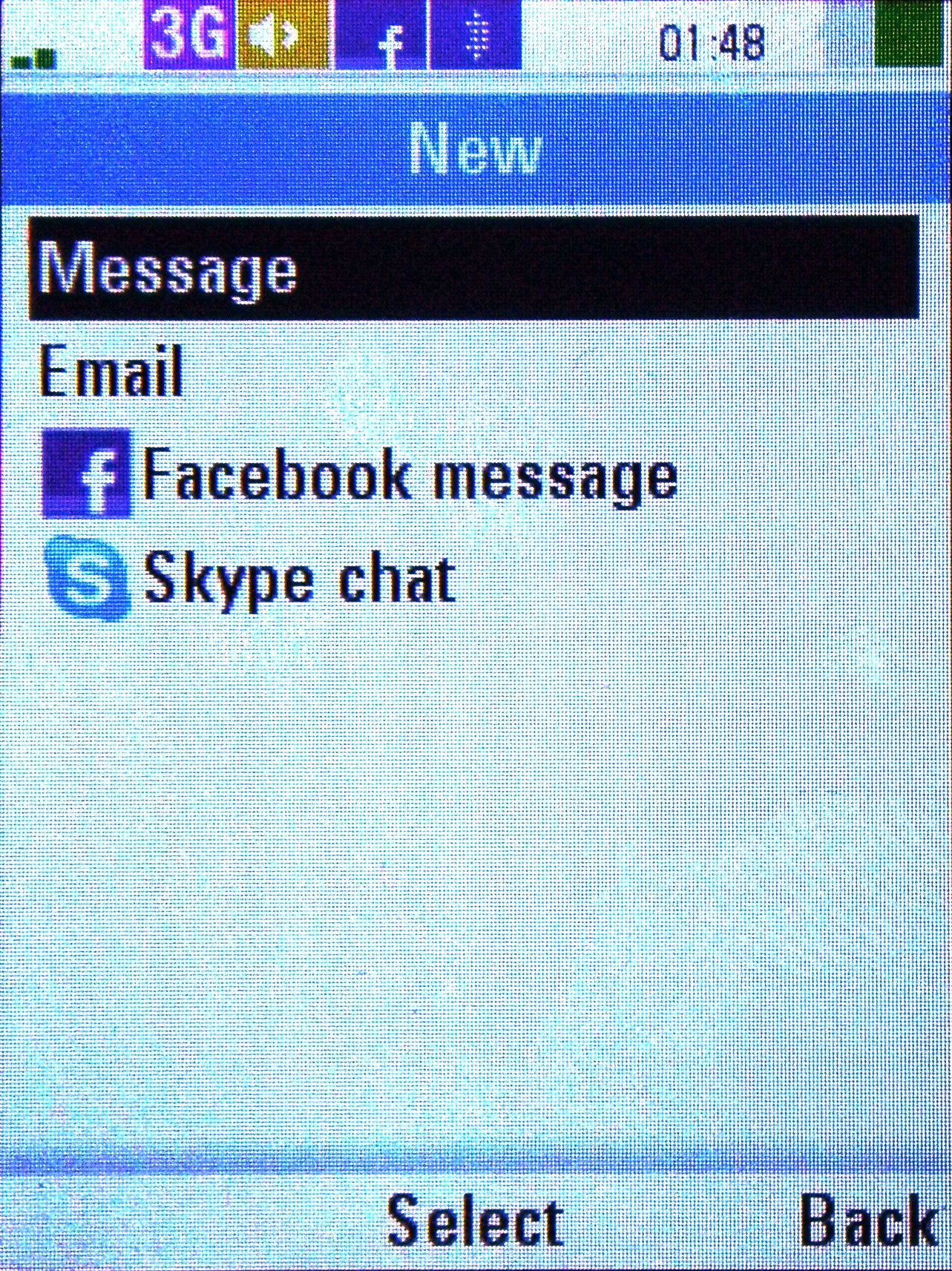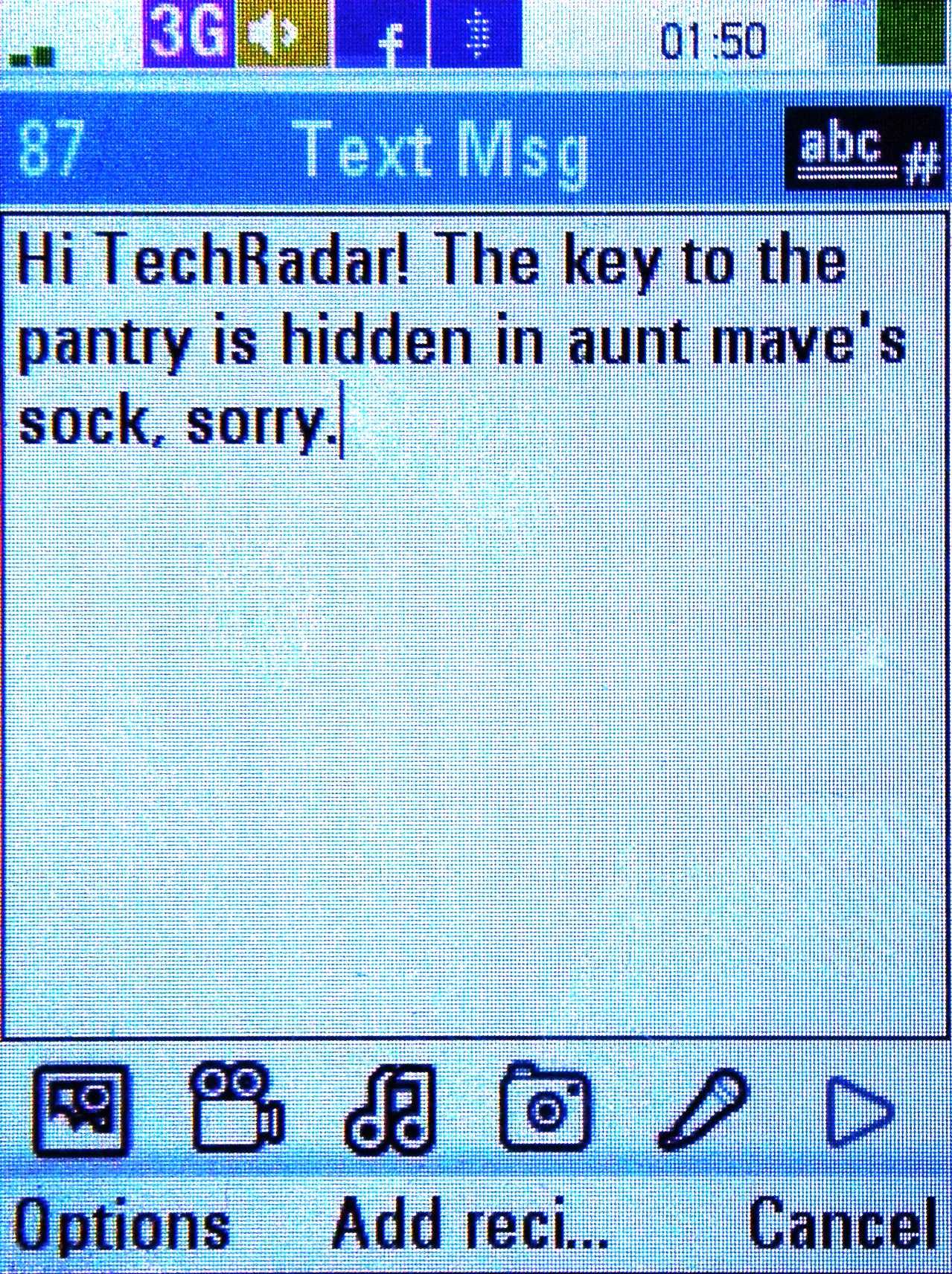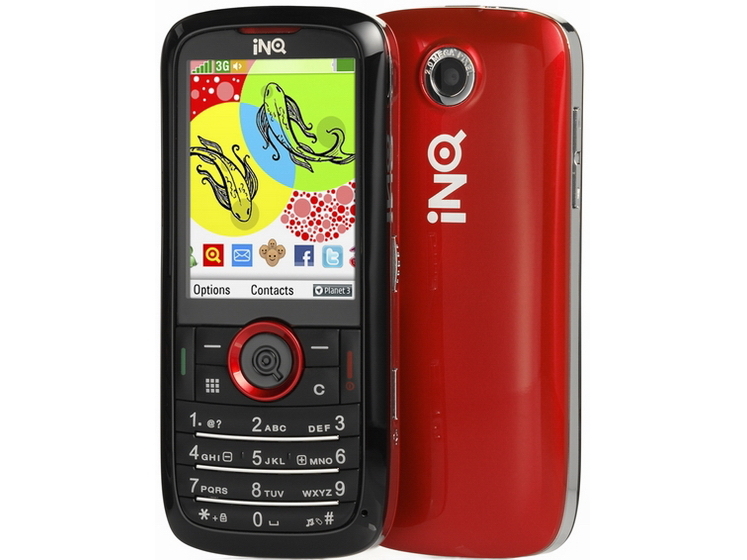Why you can trust TechRadar
What was good for the contacts list is similarly excellent in the messaging application too. From the home messaging screen users are asked what kind of message they'd like to create.
This means that not only can you send a normal text message, but one for Facebook and Skype too. It also contains information about whether you've received any pokes or friends requests, and stores these on the handset.

The good thing about this is should you go out of signal (on the London Underground for instance) you can send messages and respond to requests, with the Mini 3G updating the server as soon as the signal returns.

Text messaging is also great on the Mini 3G, with the standard message editor holding a number of options to upgrade a normal text to an MMS by adding a pre-defined picture or video clip, or recording such a thing yourself directly from the editor.
Inputting text can be a little difficult on the cramped keypad, but it's not too bad once you're used to it. The good thing about the Mini 3G is INQ hasn't tried to re-invent the wheel – the * key cycles through words, the # key changes between letters and numbers – making it easy to pick up and use.

And you're also able to edit the user-defined T9 dictionary for predictive text, which is a feature we see far too infrequently on today's phones. It means that should you accidentally add in a word you didn't mean ('oto' instead of 'mum' for instance) you can stop it appearing above a more frequently used option, which greatly reduces the level of texting frustration you feel.
And, of course, you can choose pre-defined phrases to add in (which is much easier to interact with than templates) and contacts too – basically all the messaging options have been covered here.
Sign up for breaking news, reviews, opinion, top tech deals, and more.
Current page: INQ Mini 3G: Messaging
Prev Page INQ Mini 3G: Calling and contacts Next Page INQ Mini 3G: Internet and Media
Gareth has been part of the consumer technology world in a career spanning three decades. He started life as a staff writer on the fledgling TechRadar, and has grew with the site (primarily as phones, tablets and wearables editor) until becoming Global Editor in Chief in 2018. Gareth has written over 4,000 articles for TechRadar, has contributed expert insight to a number of other publications, chaired panels on zeitgeist technologies, presented at the Gadget Show Live as well as representing the brand on TV and radio for multiple channels including Sky, BBC, ITV and Al-Jazeera. Passionate about fitness, he can bore anyone rigid about stress management, sleep tracking, heart rate variance as well as bemoaning something about the latest iPhone, Galaxy or OLED TV.
